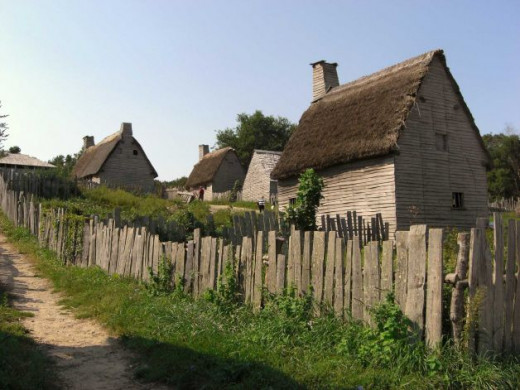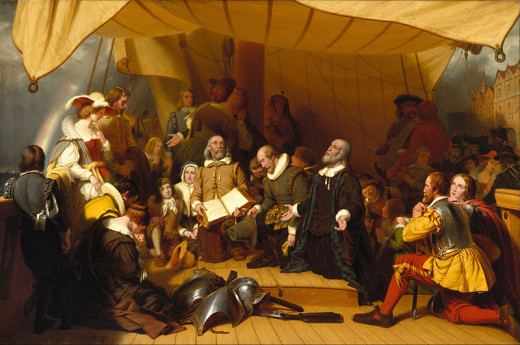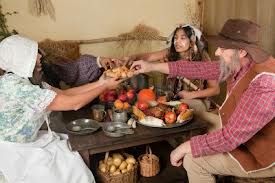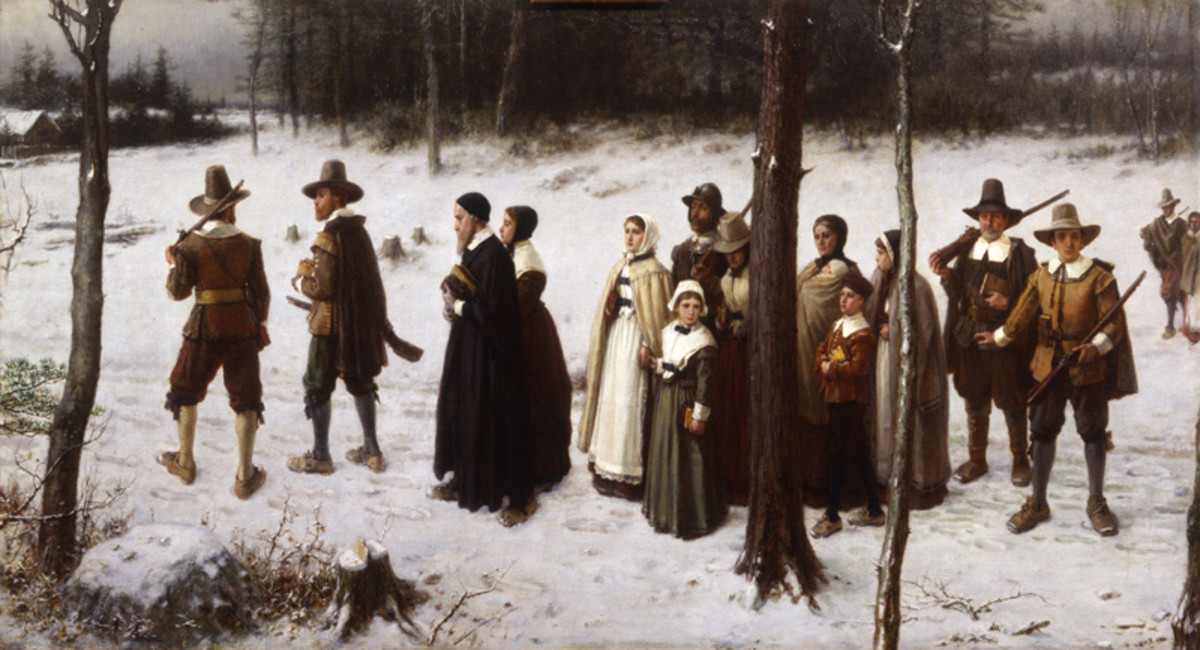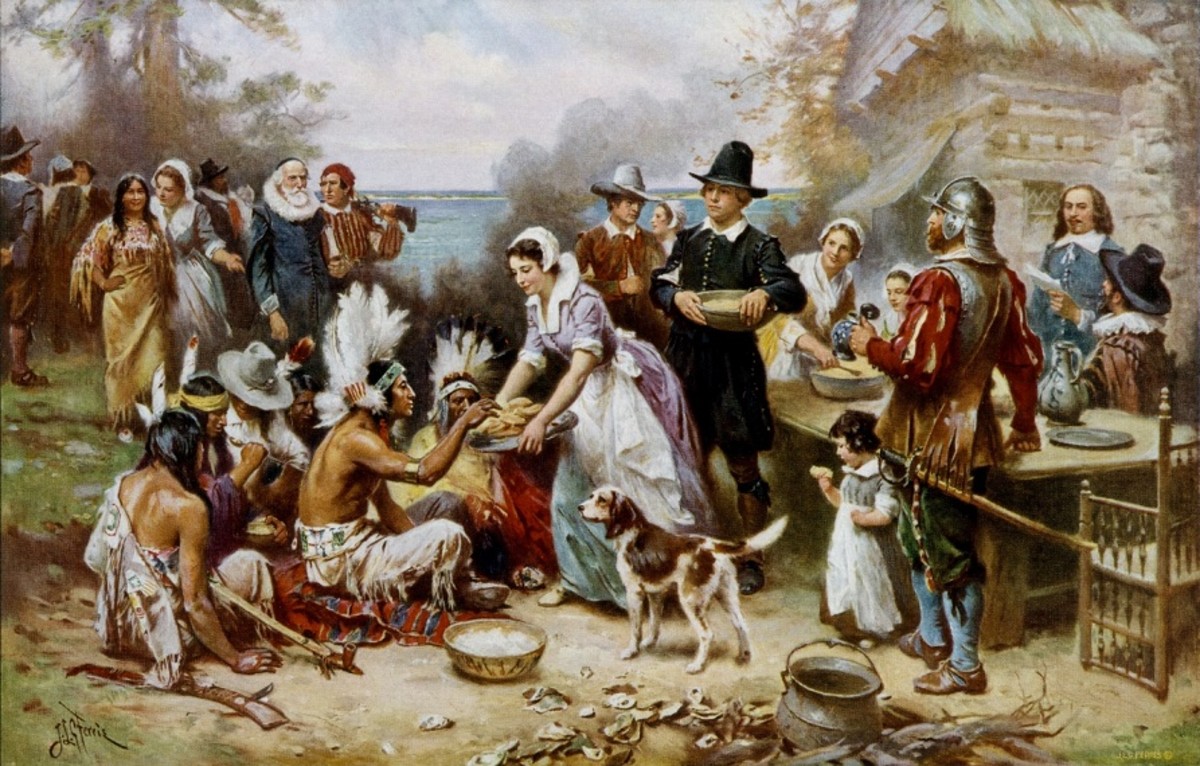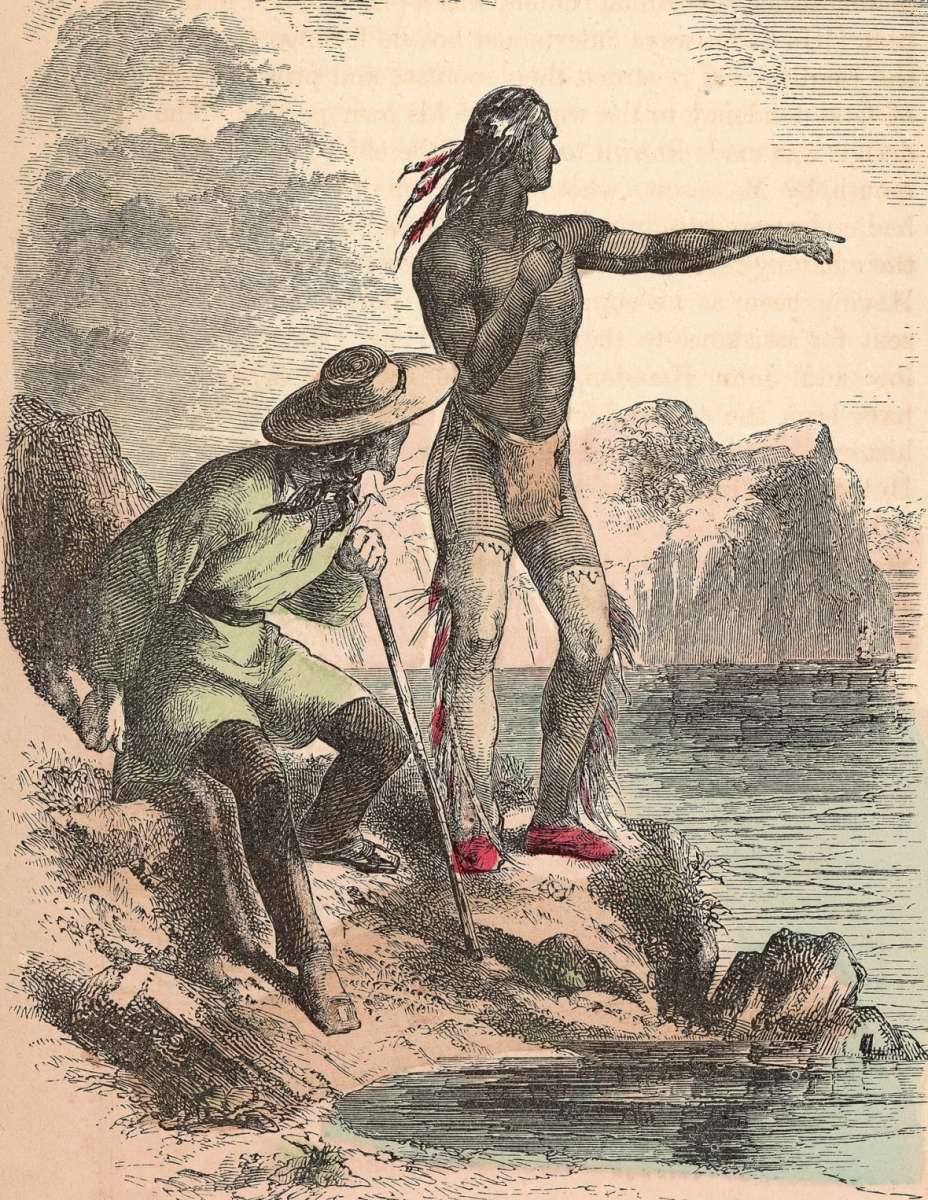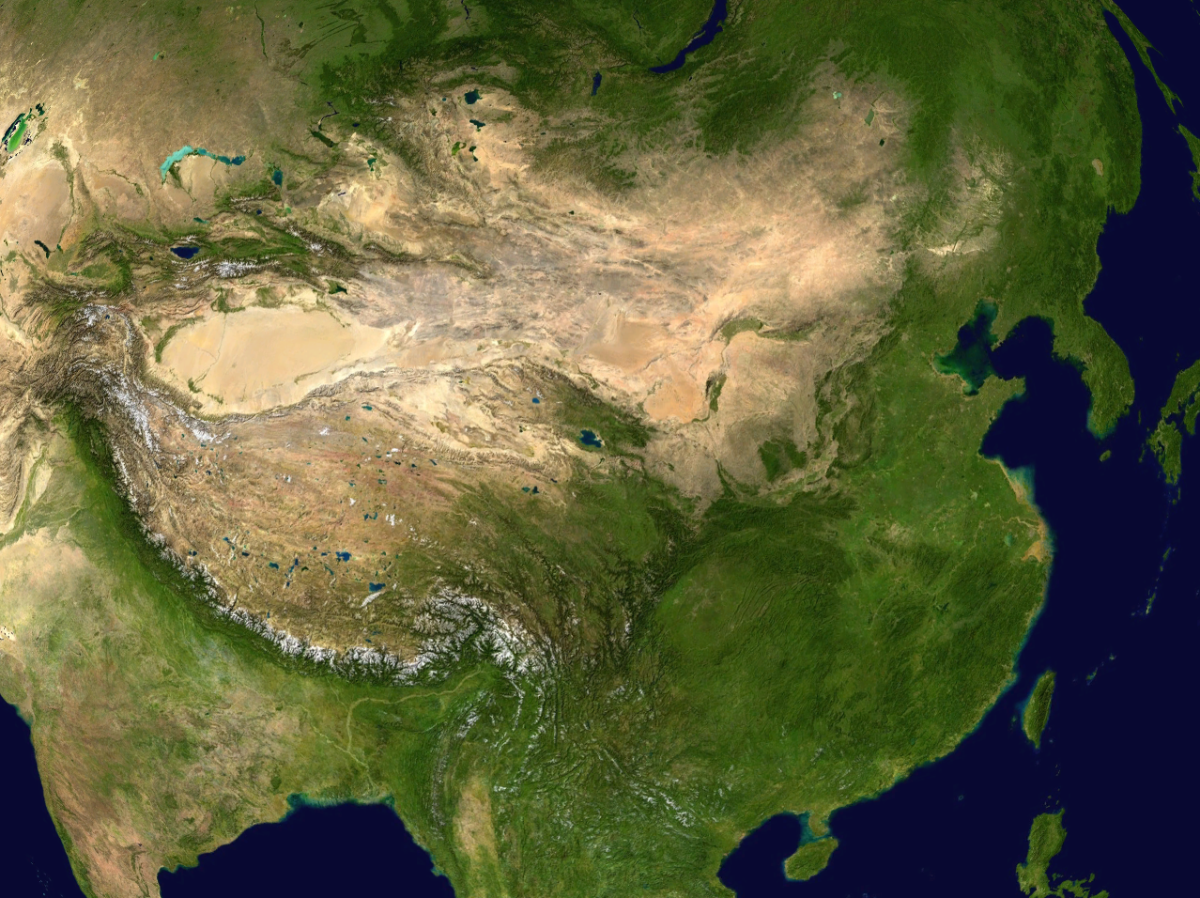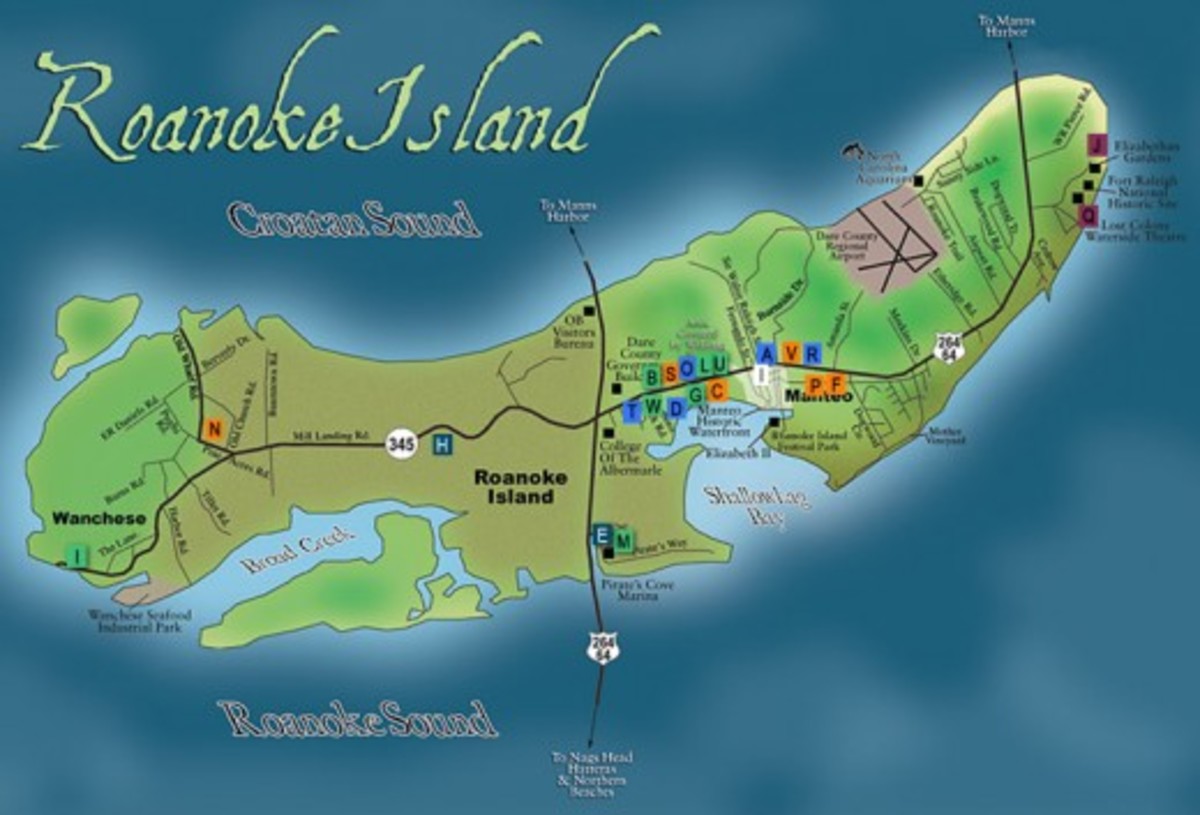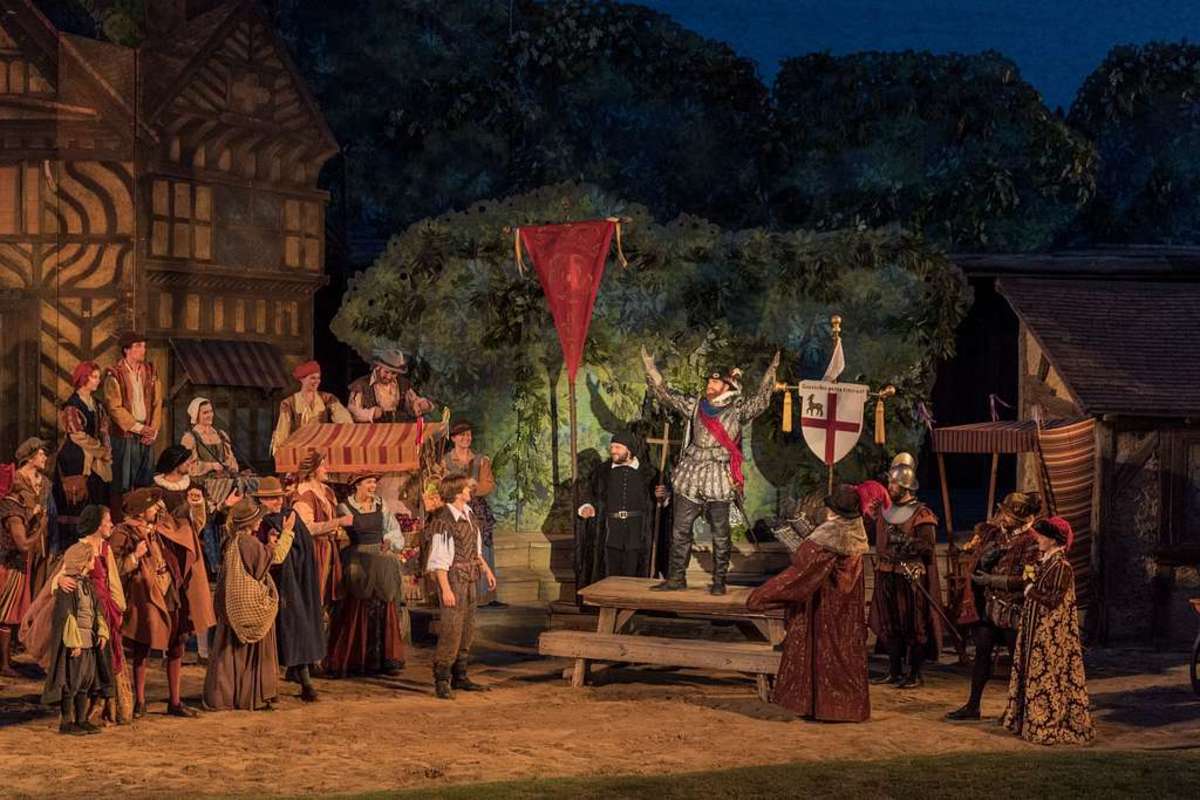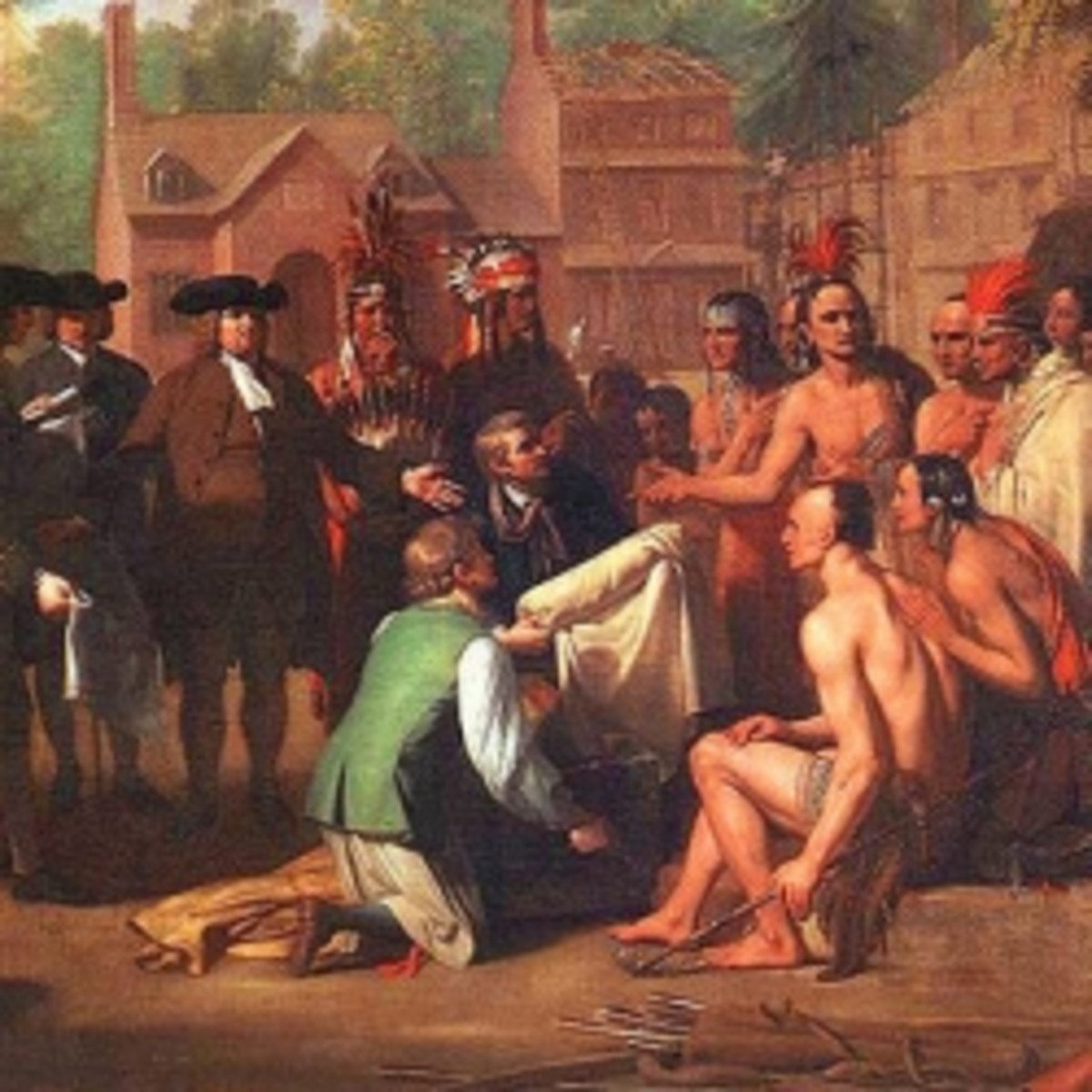- HubPages»
- Education and Science»
- History & Archaeology»
- History of the Americas»
- American History
Pioneer and Native perspectives on the landing at Plymouth rock
This paper was originally written for an American History class I took at Western Michigan University. Now that it has been graded I have decided to share it with the world!
Background
The origin of the Pilgrims who landed at Plymouth Rock and set the stage for Puritanical settlement of New England were Puritans. The Puritans were a religious group who were religious seperatists. Essentially, they believed that their's was the correct, scriptural doctrine and that those of the Catholic and Anglican Churches were not only inherently flawed, but dead wrong.
You see Puritans were really the logical conclusion to the reformation movement that started with Martin Luther and his 95 theses in the 1500's. Many groups were separatist when it came to the Catholic church, Lutherans Anglicans for example, but they kept many of the ritualistic features of the old catholic church. In fact, the Anglican church, they argued, was really just a repeat of the Catholic church, but with the King as the head of the church instead of the pope. Though the Anglican church was "protestant" in the sense that it denied the authority of the pope and was a separate legal and political entity from the Catholic church it still retained many features of the old church.
This was not enough for the Puritans, who believed that putting the King in charge was just another way to propagate a corrupt and apostate institution. So they moved; but not too America at first. They moved to Holland as a group and lived there for many years, long enough actually that their children began taking on Dutch customs and learning the Dutch language. This was to much for the group, they wanted to be separate from society, and apparently a language barrier was not enough. So they decided they would try an ocean, the Atlantic to be exact.
With the support of the Virginia Company, the pilgrims set out for the new world. They knew that this would mean professing loyalty to the king and growing cash crops to trade for the benefit of England. It was worth it though, because it allowed them to have their separate lifestyle and run the local government through the church.
This is the Pilgrim's original charter:
In the name of God, Amen. We whose names are underwriten, by the loyall subjects of our dread soveraigne Lord, King James, by the grace of God, of Great Britaine, Franc, and Ireland king, defender of the faith, etc.
Haveing undertaken, for the glorie of God, and advancemente of the Christian faith, and honour of our king and countrie, a voyage to plant the first colonie in the Northerne parts of Virginia, doe by these presents solemnly and mutually in the presence of God, and one another, covenant and combine our selves togeather into a civill body politick, for our better ordering and preservation and furtherance of the ends aforesaid; and by vertue hereof to enacte, constitute and frame shuch just and equall lawes, ordinances, acts, constitutions, and offices, from time to time, as shall be thought most meete and convenient for the generall good of the Colonie, unto which we promise all due submission and obedience. In witnes whereof we have hereunder subscribed our names at Cap-Codd the .11. of November, in the year of the raigne of our soveraigne lord, King James, of England, France, and Ireland, the eighteenth, and of Scotland the fiftie-fourth. Anno Dom. 1620 (Wheelwright, 32-33)
As a note, the King of England claimed Kingship of France up until the 19th century, even though the hundred years war had truthfully ended their chance of enforcing this claim.
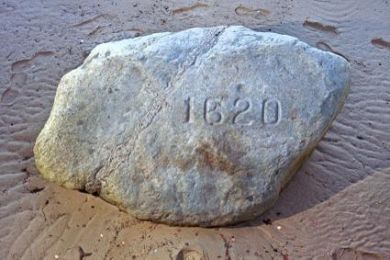
The landing at Plymouth
On the 5th of August, 1620 the “pilgrims” sighted landed at what they called Plymouth, in modern day Massachusetts. Upon landing, this group of settlers encountered several native tribes that were living in the area. The natives knew something of the English from the Jamestown settlement, which had been around for about 13 years and was only a few days south. Though the pilgrims and Indians initially responded to eachother with what seems to be justified fear, they eventually managed to craft a treaty to govern their relationship which gave advantages to both sides.
So, how did the Native Americans and Settlers respond to eachother? Initially, the two groups were scared of each-other. The Indians are recorded as sneaking around on the outside of the camp on the 30th and 31st of January “In the morning, the master and others saw two savages that had been on the island near our ship.” (page 6), and the pilgrims, on both the 24th and 25th of December thought they heard Indians and that was enough to make them arm themselves; “Our people on shore heard a cry of some savages which caused an alarm, and to stand on their guard, expecting an assault, but all was quite.” (page 5) “…towards night some, as they were at work, heard a cry of some Indians, which caused us all to go to our muskets, but we heard no further.” (page 5). The pilgrims were jumpy, they didn’t know what to expect from the Native tribes, didn’t know if they would be friendly or hostile, and seemed to assume the worst.
The behaviors of the Native Americans recorded also indicate fear. They took months to actually confront these new settlers, and when they did, it was actually not a local, but a man from the south who already knew some English. “…but were interrupted by the savages, as we mentioned formerly. And whilst we were busied hearabout, we were interrupted again, for there presented himself a savage [Samoset], which caused an alarm.” “…He saluted us in English, and bade us welcome…” (page 7). The locals themselves seemed to be curious about the settlers ship, appearing near the water on January 30 as mentioned above, and they were also curious about their metal tools; when the pilgrims left some tools alone in the woods the native’s stole them, “Captain miles Standish and Francis Cook being at work in the woods, coming home, left their tools behind them, but before they returned their tools were taken away by savages (page 6). they did give them back when later asked however; which seems to indicate their intentions were investigative rather than malicious.
On both accounts their responses to each other probably was warranted actually. You have to look at the wider picture here. In the last 13 years the English had begun to settle the shores of North America; and relations were cool at best between the two “groups.” Though some Native tribes got on quite well with the English, many, including the Powhatan, inhabiting the area near the Jamestown settlement actually made raids against the English in response to shoddy treatment.
So on the Pilgrims side you have a history of seeming Native aggression against settlers, partly in response to English aggression (such as the kidnapping of twenty Natives to sell into slavery) and arrogance. Given this and the unknown nature of the natives to this group of people in question; it’s no wonder they clung tightly to their muskets in those early days.
On the Native’s side, 20 of them had recently been captured by an English captain and sold into slavery “These people are ill effected towards the English, by reason of one [Thomas] hunt [captain in captain John Smith’s company], a master of a ship, who deceived the people, and got them under color of trucking [trading] with them, twenty out of this very place where we inhabit, and seven men from the Nausets, and carried them away, and sold them for slaves[in Spain] like a wretched man…” (page 8).Though some locals had traded with the English before, how could they trust these new people who had kidnapped 20 of their people? To the local Natives the English must have been a scary bunch on their own, a new people who seem intent on doing harm and are deceitful? With these facts in mind, it’s little surprise the Natives were hesitant: were these the English who liked to trade? Or the ones who took your children, wives, husbands and siblings?
The treaty seems to favor both sides fairly evenly. It is basically a treaty of Alliance as if guarantees that either side will fight alongside the other if they are attacked by a third party. This favors both sides, as the Settlers gain the experience, knowledge of local topography and numbers by having the Natives as allies; and the Natives gain the Englishmen’s muskets. The noise of a musket would terrify their enemies, and the wounds they caused would be a powerful incentive for other tribes to leave them alone.
The treaty also dictated that either side would allow the other to punish its citizens if the citizen in question did someone of the other group harm. Basically, both sides got extradition rights.
Each side also agreed to leave their weapons behind when dealing with each other, so as to remove the suspicion of the other side when negotiating. They also decided that the Natives would alert the other tribe in the area that these settler’s were under their protection (and surely point out to these tribes that their new allies had powerful new technologies.)
In all, the natives had the least to lose by not agreeing to the treaty; but they gained valuable allies in the short term. Of course, ultimately the English pushed them out of their lands, but in the moment, this treaty made sense.
Bibliography
Markman, Marsha Carow., Jonathan Boe, and Susan Corey. "1." The American Journey, Volume 1: United States History through Letters and Diaries. 2nd ed. St. James, NY: Brandywine, 2003. 3-10. Print.
